Featured in our current exhibit, Remington and Russell in Black and White, is a drawing of a seemingly unusual sight: a soldier jumping on to a horse!
This drawing is one of three images of horse acrobatics featured in an 1898 Harper’s New Monthly Magazine article, “The Essentials at Fort Adobe,” written and illustrated by Remington. The Fort Adobe he refers to in the article is actually Fort Robinson, a military post in Nebraska established in the early 1870s. Remington’s title was likely drawn from the adobe barracks that were built in 1887 to house the officers stationed there.
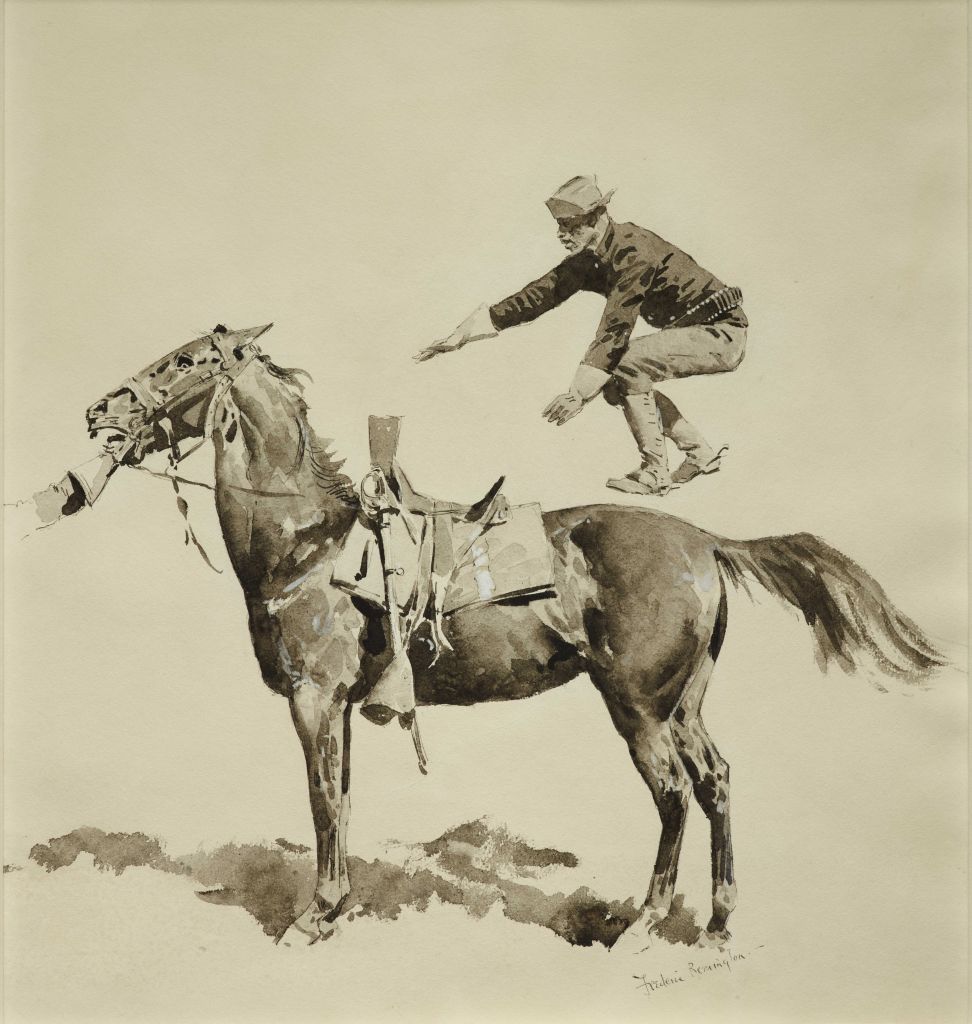
Frederic Remington, Jumping on to a Horse, ca. 1896, ink wash drawing on paper, Private Collection
Fort Robinson was a military base in the Pine Ridge region of northwest Nebraska that played a major role in the Sioux Wars from 1876 to 1890. In 1885, the 9th Cavalry Regiment (also known as the Buffalo Soldiers who had served in the Civil War and American Indian Wars) were assigned to Fort Robinson. Remington featured the Black soldiers he encountered at the military base in the paintings and drawings he made to accompany the article.
Remington’s account of his time at the Fort mostly records the routine daily drills and boredom of garrison life. But the monotony is broken when Remington notices a soldier jump over a horse. Other illustrations accompanying the text feature scenes the artist witnessed of “Horse Gymnastics.”
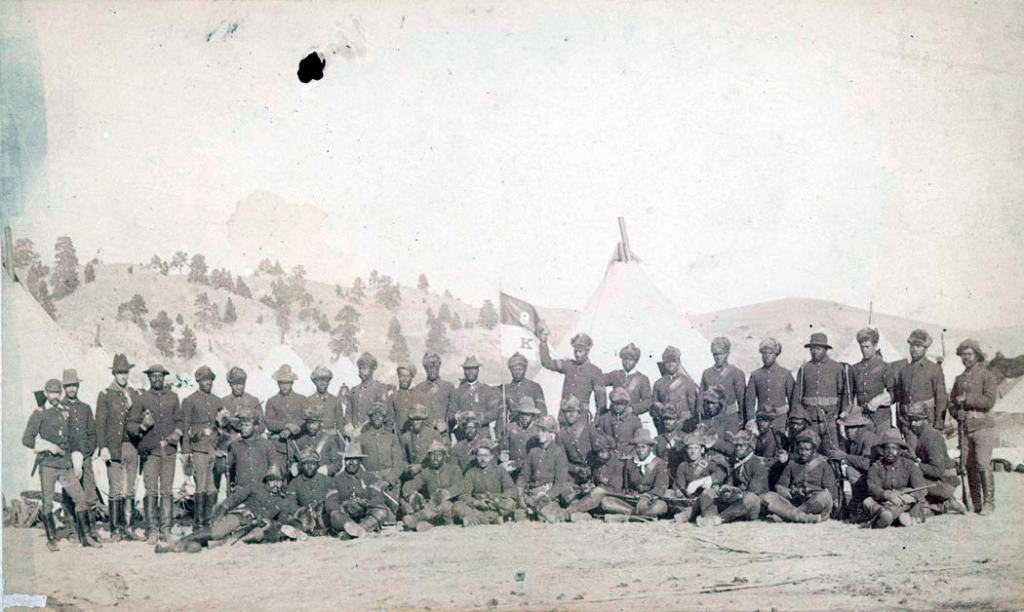
K Troop of the Ninth Cavalry in front of tents, possibly at Pine Ridge Agency, about 1890, https://history.nebraska.gov/fort-robinson-history-center/brief-history-of-fort-robinson/
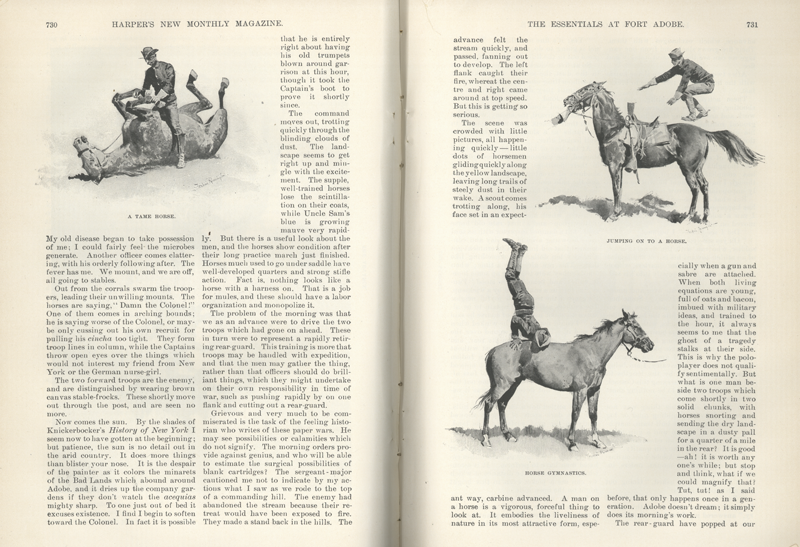
The Essentials at Fort Adobe, Frederic Remington, Harper’s New Monthly Magazine, April 1898, pp. 730-731, halftone, image courtesy of Harper’s Magazine
For much of the article, Remington narrates the routine drills when he takes note of some unusual activity during breakfast one day.
“But what do I see – am I faint? No; it has happened again. It looks as though I saw a soldier jump over a horse.”
Not believing his eyes, he asked a nearby soldier to corroborate the vision.
“ ‘Oh yes sir – you see,’ returned a little soldier, who ran with the mincing steps of an athlete toward his horse, and landed standing up on his hind quarters, whereupon he settled down quietly into his saddle.”
Shortly thereafter, Remington noticed many others participating in the theatrics with their own horse.
“Some had taken their saddles off and now sat on their horses’ bellies, while the big doglike animals lay on their backs, with their feet in the air. It was circus business, or what they call ‘short and long horse’ work – some not understandable phrase. Every one does it.”
Clearly, Remington found the whole performance nothing short of marvelous.



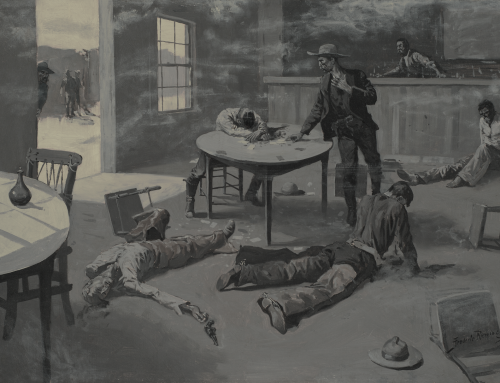
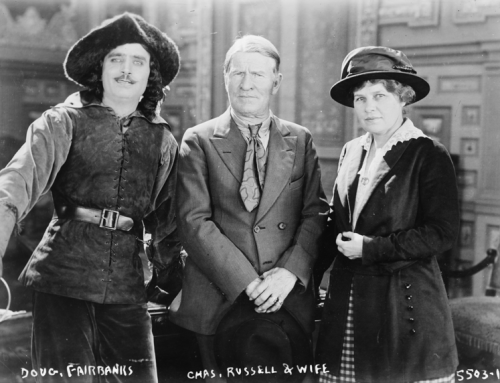
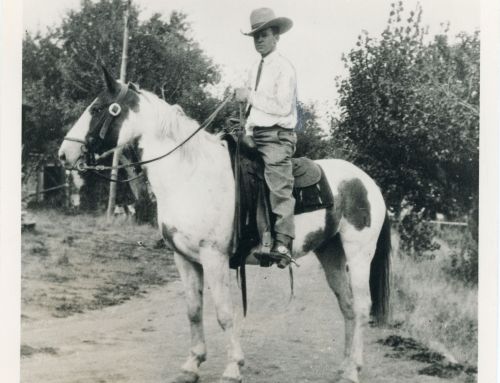
[…] One such artwork is currently on display in our current exhibit, Remington and Russell in Black and White, depicting a Buffalo Solider jumping onto a horse. […]